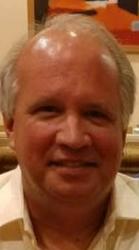Last Sunday in Singapore, Ferrari’s team strategy helped one of its drivers and hurt another. Mattia Binotto explains why he made the decision that held back Leclerc and enabled Vettel’s win.
A few seasons ago–it was 2010, to be specific at the Grand Prix of Germany at Hockenheim–then-Ferrari driver Felipe Massa was leading teammate Fernando Alonso when Massa’s race engineer Rob Smedley said a phrase which is very common to many Formula 1 driver teammates today: “Felipe, Fernando is faster than you.” It was the key to let Alonso pass and challenge faster cars up front.
And it’s not as though that strategy is new. In 2002 at the Austrian Grand Prix, Rubens Barrichello was certain of a win when, on the last lap, he moved over so that Michael Schumacher could win the race and increase his championship lead.
Those situations did not repeat, exactly, last Sunday night in Singapore. But a strategic method–known to many drivers as “undercutting”–helped significantly in giving Sebastian Vettel his first victory in over 13 months. Ferarri teammate Charles Leclerc pitted later than Vettel, which gave the German a chance to win the race.
The outcome might be a ‘win the battle, lose the war’ scenario if the strategy ends up coming between Vettel and his up-and-coming Ferarri teammate. Leclerc had just come off three straight pole positions, including the pole in Singapore, and had consecutive race-day victories at Spa-Francorchamps and Monza.
And Leclerc was not alone in feeling betrayed on Sunday. After coming in for a pit stop, Mercedes driver Valtteri Bottas was told by team technical officer James Allison to wait 48 seconds so that teammate Lewis Hamilton could overtake him and challenge the top three.
In both cases, the team strategy worked. Vettel won. Hamilton challenged. But at what cost?

Mattia Binotto addressed the media (photo, YouTube)
For his part, Leclerc was confused but, in the end, put up with it. But Mattia Binotto, Ferrari’s team manager, felt too much was at stake for any other decision to have been made. Without the move to limit Leclerc, Binotto said, both Bottas and Red Bull driver Max Verstappen would have overtaken Vettel.
Binotto took the time to explain the situation.
“Verstappen was ready to stop, so we had to protect his [Sebastian’s] position,” Binotto said. “It was the best opportunity for us to try and overtake Hamilton. Later on, we would have stopped Charles, and the pit crew should have been free for him. So that was the right time to stop Sebastian–no discussion.”
Binotto continued: “It was simply the proper window for Seb (Vettel). I know that Charles is annoyed and frustrated, which is a positive attitude. If you would be a driver, that’s the right attitude to have. What I told him is that the scenarios are bigger and, by the time he understands the full picture, I’m pretty sure he will quickly understand the reason for the choice.”
For Ferrari, the stakes are high. Mercedes has dominated the 2019 schedule, but Ferrari now has clocked three wins in a row–all coming since the summer break.
Binotto can hang his head high again. But, still, he can only hope that by winning as the team did on Sunday that his drivers can get along well enough to continue winning and end Mercedes reign of championships.
Binotto looks at it this way. “For him (Leclerc in Singapore) it’s a missed win, but it could have been the other way around (with a Vettel win rather than a Leclerc win) in Belgium.”
















